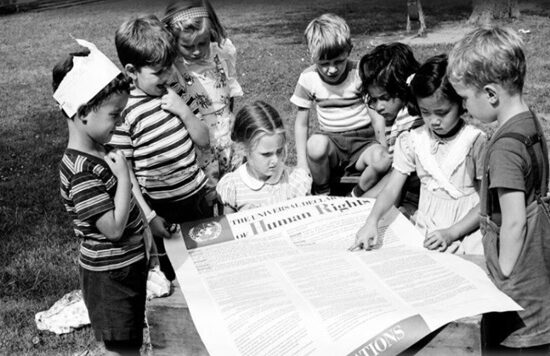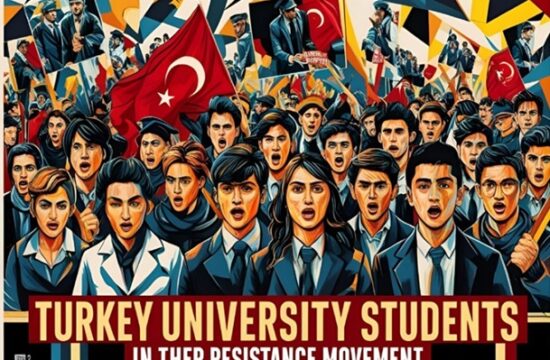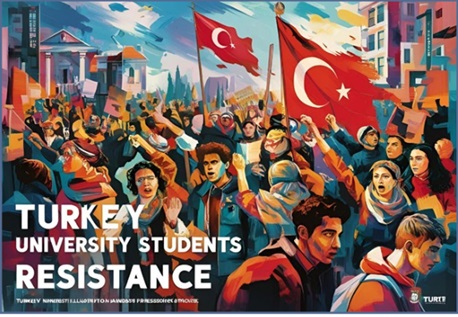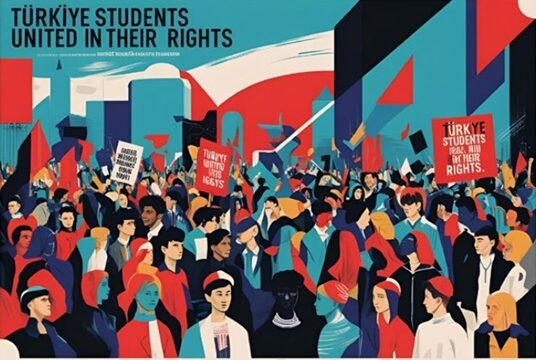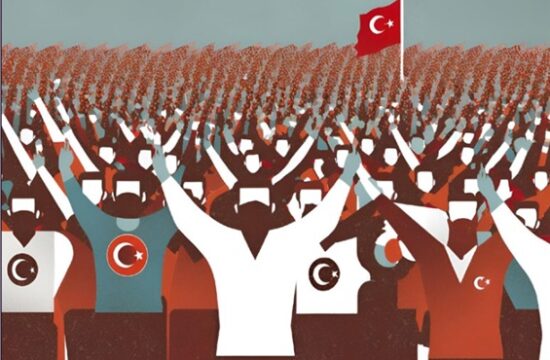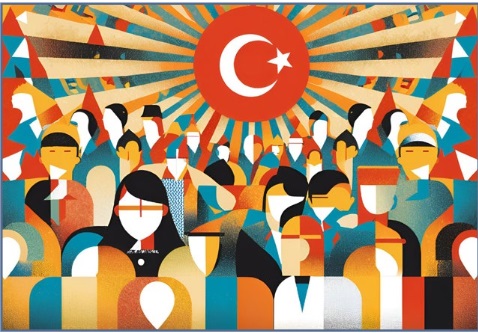MERT
Middle East Technical University (ODTU)
picture source: Created with AI
On March 18, the government annulled the diploma of Ekrem İmamoğlu, the principal candidate of the opposition party for the presidency. On the morning of March 19, Türkiye awoke to an increasingly chaotic political situation, with arrests of journalists and politicians, including İmamoğlu. The AKP’s moves to restrict political space had been under discussion for some time and, in this context, a political prohibition of İmamoğlu was expected. However, the process moved faster than expected and the country witnessed a large mobilization in the last month. While the ban raised great mistrust and questions in public opinion, the youth provided the answer to how the process would continue. On March 19 at midday, protests began at Istanbul University and quickly spread across the country. The protests were further stoked in the afternoon, when thousands of students at the ODTU (Middle East Technical University) campus began chanting „government resign“ slogans outside the campus. From the very beginning, it can easily be said that the reactions at the center of the protests went beyond the political prohibition imposed on İmamoğlu, that the AKP had turned the country into a prison from which young people could escape and that a strong quest against this situation dominated the process.
In the following days, the protests continued with increasing force. The one week long academic boycott that began in universities with the ODTU’s call became one of the central elements of the agenda in Turkey. Students across the country spent this period organizing their lives in struggle collectively. At a time when history was being written and attempts were being made to usurp the right to vote, the youth stepped onto the political stage and took a decisive position. Throughout the process, the entire country focused on the news and hopeful images coming from campuses, especially ODTU. But how did youth, and ODTU in particular, come to occupy such a central place in the process? How was the struggle organized on the campuses? What were the most prominent elements in terms of the political nature of the protests?
The youth movement in Türkiye holds a very important and special place in the memory of the society. In many social events in the country’s history, the youth have always been at the forefront and left their mark with their patriotic identity. From the fervent rise of the 1960s to the September 12 coup d’état, the youth was the locomotive of the country’s revolutionary movement. Precisely because of this, the youth leaders of the time left deep traces in broad segments of society and continue to be highly respected figures. The basis of these deep traces lies in the struggle for the country’s independence and the search for an egalitarian order.
The fact that ODTU is a symbol of struggle is embedded in the fact that it has a history integrated in the above-mentioned quest. The Middle East Technical University is designed as a tailor-made project that reflects and reinforces the trends of the country in a given period. A university founded to eliminate the shortage of engineers in a country where capitalism has been late to arrive, to provide the skilled labor required by the needs of imperialism in the Middle East, and to serve as an incubator of capital…. The fact that it was the first university in the country to teach its classes entirely in English helped to maintain the class profile of the students in favor of this objective in the short period following its establishment. With the opening of the preparatory faculty, the school became accessible to the children of the poor Anatolians who did not speak English, and on this basis it quickly became a space where the revolutionary ideas emerging in the country took root. The last years of the 1960s, which passed with shocking actions ranging from the violent youth protest against the US 6th Fleet in Istanbul to the burning of the car of US Ambassador Robert Komer, known as the Butcher of Vietnam, in front of the ODTU Rectorate, leave behind a youth whose struggle is now fully identified with the slogan
of independence and revolution. The legacy of this youth to ODTU and to the collective memory of society still lives on in the center of the campus, in an inscription written in capital letters on the stadium: Revolution…
The dynamic cultural landscape
of the university:
This legacy has been preserved for decades. Thanks to the school’s dynamic cultural environment, students are able to meet frequently. The spaces where they meet are not disconnected from politics, on the contrary, they construct them in a way that they intervene in politics. Students join together in platforms of socialist societies and parties and build active politics on campus. In this way, the campus becomes a politically vibrant living space whose tradition is passed on to each new generation.
On the evening of March 19, one does not have to look far for the reason why the protests that began outside the campus made such an impact. The broad traces of the university in the social memory were quickly revitalized in this process, as in any mobilization. Students acted from day one with a sense of responsibility to the country and confidence in their traditions. The protests continued with acceleration after the strong image of the first day. The next day, when the students wanted to march again to the city center square and join their struggle with that of the people, what they found when they went to the gate of their campus was the police intervention, which lasted for hours. The police blocked the campus and used a much higher level of violence against the students than in the rest of the country. Later in the day, people from other universities and plazas came to the gate that students were struggling to leave, and the campus became a center of resistance. Within hours, the protest ended with a call for a nationwide academic boycott. Next day, the same voice was raised from all universities. Everywhere is ODTU, Resistance at everywhere!
Across the country, young people quickly initiated boycotts and the struggle took on a different dimension. Boycott committees created in departments to manage the boycott at ODTU became a means of collectively producing life through struggle. Students organized events, concerts, political debates, open lectures and workshops with academics in their departments and faculties starting in the morning for a week. Videos in which songs and slogans symbolizing social movements of the past were sung in the classrooms produced hope for the whole country. The festive atmosphere and energy created throughout the day carried over to the afternoon protests, and mass demonstrations continued both in the city center and on campus.
The youth, who grew up under AKP rule, reinforced their rebellion in the streets with their anger against poverty, lack of future and having no choice but to leave the country. Throughout the protests, republicanism was the most intense tendency. Young people kept looking for the remedy in the Revolution of 1923, albeit with clumsy references.
There were many surprising elements. In the process, the CHP became the most criticized focus after the government for failing to manage the protests and trying to keep them weak. The slogan „The solution is in the streets, not at the ballot box“ became one of the main slogans of the protests and was often directed against CHP platforms. Another element was the nationalist symbols in the squares. Young people marching with „gray wolf“ signs often confronted the police and sometimes shouted slogans that were identified with the socialists.
Meanwhile, the ruling party decided to increase the dose of violence to repress the mobilization. On March 26, 30 students were arrested during protests on the ODTU campus. The following night, police raided the campus camping area and arrested 9 more students under the pretext of a banner. Another government measure against any possible backlash was to extend the vacation for the Feast of Ramadan from four days to nine days.
lthough mass demonstrations were suspended, the youth did not lose their political energy The arrest of 301 people and the fact that they spent the vacation in jail had major repercussions. On April 2, a significant part of the population carried out a consumer boycott
with political energy. The boycott, which also prompted many debates on consumption and production power, was widely accepted, especially by the youth, in the perspective of stopping life beyond these debates.
At this point, the achievements of the process and the tasks for the future continue to crystallize. Turkish youth feel much more hopeful and stronger than before. It was a great source of self-confidence to unite in thousands against bullying, and influence the course of life Even if there are no clear frames on how it will be different from today, the search for ways to stop life in the pursuit of a different sociality and the debate on the power coming from production in this context showed a significant potential in the youth, as
long as the short-term results are not exaggerated. In addition to the right to vote, young people have taken the responsibility of struggle for the future of themselves and their country, and have revealed their search for a new way of life.
As Turkey is dragged into a near future full of uncertainties and political crises, the current task seems to be to position the emerging mobilization in an organized, continuous and unsettled direction. Only in this way will the youth be able to make effective interventions to build the desired future.



